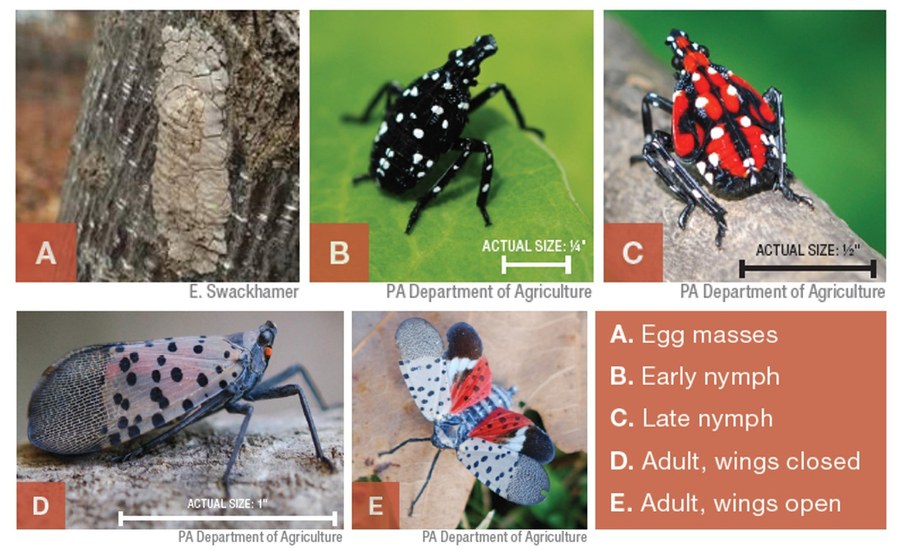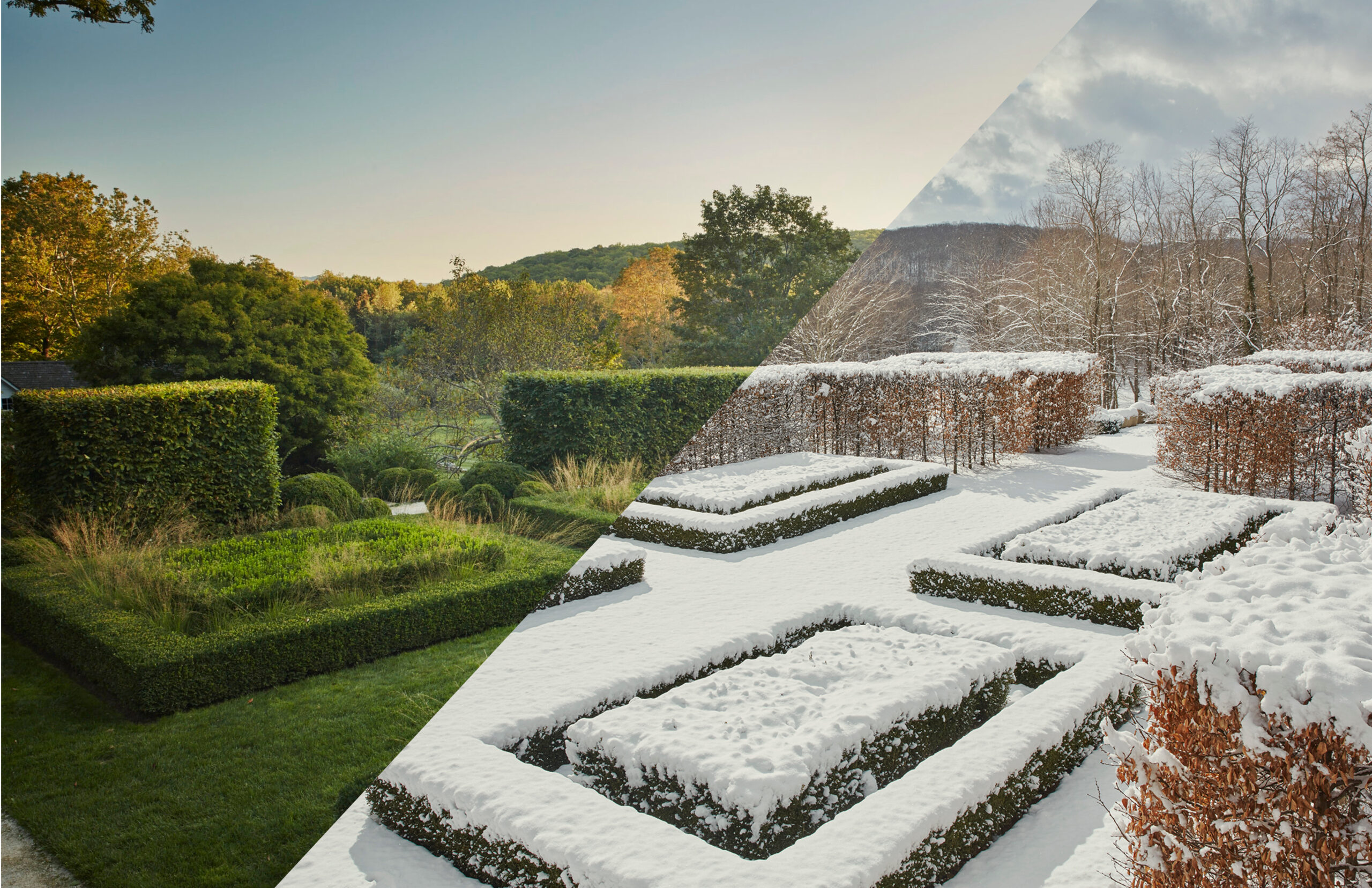If you’ve sighted a moth-like insect on the East coast with bright colors and gray-black spotted wing structure, you’re most likely looking at a Spotted Lanternfly. So what is a spotted lanternfly?
First discovered in Pennsylvania in 2014, a Spotted Lanternfly (Lycorma delicatula) is a planthopper native to parts of China. This insect has since fed on sap of over 70 different plant species, including a range of economically important plants and can severely impact the grape and orchard industries.
A Spotted Lanternfly is a very invasive insect and their feeding habits can cause plant health problems, and in some cases even kill your plants. The female of the spotted lanternfly prefers to lay eggs on a host tree, although they have been observed depositing eggs on flat surfaces, including concrete. They lay eggs in clusters of thirty to fifty, and the dried wax can look like a mud splash. The eggs hatch in late April, and the adults can grow to about an inch in size.
To much concern, a Spotted Lanternfly’s honeydew deposited on leaves and stems attracts other insects and promotes sooty mold, which can cover many plants. This insect once discovered in Pennsylvania has now spread to 10 others states including:
- Connecticut
- Delaware
- Indiana
- Maryland
- Massachusetts
- New Jersey
- New York
- Ohio
- Pennsylvania
- Virginia
- West Virginia
If you are unsure what species of pests are in your state, click here to go to the Pest Tracker by the Animal and Plant Health Inspection Service of the U.S. Departments of Agriculture.
How to Identify a Spotted Lanternfly?

Despite their similar appearance, Spotted Lanternflies are different from most other kinds of insects. They have piercing-sucking mouthparts and are planthoppers, which means they feed on sugary sap from plants. This makes them similar to moths, but they are actually classified in a separate order called Hemiptera, which is closely related to cicadas.
Spotted Lanternflies live on trees and can be found in the United States and Canada. Their eggs are yellowish-brown, covered with a waxy coating before hatching. These eggs are laid on a host tree during the fall and hatch in late April or early May.
Spotted Lanternfly nymphs are strong jumpers. The early black stage nymphs do not penetrate the tree bark, but move up and down the tree trunks near the ground. Late red-stage nymphs are more likely to congregate in a particular area.
As for adults, Spotted lanternflies have black spots on their forewings, and they’re usually around one-half an inch long. In addition, their hind wings are bright red. Spotted lanternflies feed from late summer to early fall and can cause damage to trees. Their eggs are laid on smooth surfaces. And they’re much easier to identify than their spotted counterparts, which are a few millimeters long.
Spotted lanternflies are highly destructive insects that damage trees, plants, and property. Fortunately, there are ways to prevent them from spreading throughout your property. You can buy a product designed to control their population. Make sure to follow instructions carefully to get rid of this pest and prevent it from returning. And remember: If you’re unsure about what a particular species of lanternfly is, read the label carefully.
How Do I Get Rid of Spotted Lanternfly?
Fortunately, there are many ways to remove the infestation from your property. While there are destructive and noxious ways to remove Spotted Lanternflies like removing trees and creating insecticidal soap, a more eco-friendly way is to wrap tree trunks with sticky tape and allow the Spotted Lanternfly to crawl up the host tree and become trapped organically.
Sticky tape is a popular DIY tree treatment for many homeowners as it is easy to install and is an effective way to remove the pest from your property. While there are a variety of methods to use sticky tape on trees, Heather Leach, an Extension Associate at Penn State said “the bands should be placed about 4 feet from the ground, tightly securing the band by stapling it to the tree or by using push pins.” [1]
Click here to watch how to set up sticky tape around trees, created by Lancaster Conversation.
If you’re using a sticky band to trap lanternflies, make sure you measure the width of the tree. The band should be around 1.5 times the diameter of the tree and three times as wide. Use push pins to attach the window screening to the sticky trap. Make sure the window screening is pleated so it doesn’t stick to the band. Use a tight, but narrow sticky band that sticks tightly against the tree. This will reduce the risk of trapping other wildlife in the sticky trap.
Works Cited
[1] Amy Duke. “Spotted lanternfly expert at Penn State offers advice on using tree bands” Penn State, June 19, 2019
















